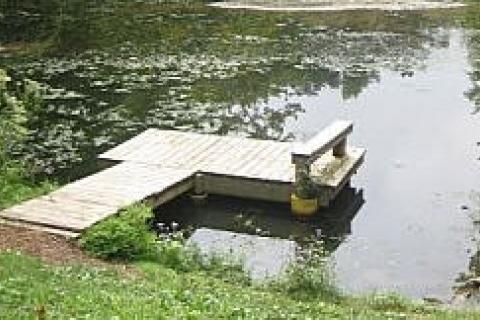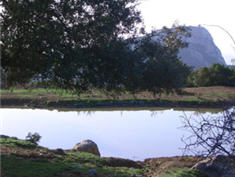
Pond Boss subscriber Bob Durham dropped us an email asking about using a well to fill a pond. During my travels around this great country, I am privileged to be involved in a diverse range of projects. One thing about wells always strikes me during conversations with landowners.
Here’s a typical exchange. Landowner says, “If my watershed isn’t quite big enough, I may just drill a well and fill the pond.” Or, one might say, “If the pond leaks, we can just punch a well and keep it full.”
It ain’t quite that easy, folks.
Here’s where I always start. Remember this number…it’s of huge value as you think about a well. One acre, one inch deep, is 27,000 gallons. That’s twenty seven thousand gallons of water! Many wells are drilled for domestic uses, water for the house, maybe for livestock. But, do some math. If you have a well which produces 10 gallons a minute, 600 gallons an hour, 14,400 per day…hmmm…and you have a three acre pond?
People tend to think a “well” will do them well. Not necessarily so. While I never discourage someone to drill a well, I do think it wise to do a little research and think it out, forgive me, “well.” A well thought out well will be better than an expensive hole in the ground.
While volume is important, so is quality. You don’t necessarily need to go way down deep to get water of pond quality. Fish and plants like hard, mineral laden water. If a shallow aquifer has iron, lime, other minerals and metals, it’s likely pretty good for fish. Don’t drink it, though. Hard water with lots of minerals doesn’t taste like Ozarka.
 I have yet to see pure water come out of te ground. Contrary to popular belief, most groundwater is loaded with something it absorbed along it's trek toward the middle of the Earth. As water seeps downward,into aquifers, it digests rocks, metals, gasses, and organic matter it might pass through. When it sees the light of day, everything changes. Don't be surprised if your well water leaves a nice coat of orange on everything it touches. Iron. Or, it might bless you wiht the ever-effusive aroma of rotten eggs. Sulfur.
I have yet to see pure water come out of te ground. Contrary to popular belief, most groundwater is loaded with something it absorbed along it's trek toward the middle of the Earth. As water seeps downward,into aquifers, it digests rocks, metals, gasses, and organic matter it might pass through. When it sees the light of day, everything changes. Don't be surprised if your well water leaves a nice coat of orange on everything it touches. Iron. Or, it might bless you wiht the ever-effusive aroma of rotten eggs. Sulfur.
I had a well drilled just more than a year ago. The driller I chose has been a client for years. I stocked his pond years ago. He is also the main well guy I refer people. He is knowledgeable, and willing to answer all questions. I told him I needed at least fifty gallons per minute to serve my fish vat shed, and to fill any one of six ponds on my home site. While he couldn’t honestly guarantee what I might get, he took away much of the guesswork by drilling a hole big enough, and finishing the well appropriately, with the correct size pump. As long as there was water in the aquifer, the well would do its job. So far, so good. The well produces 75-80 gallons a minute. It has iron, a little sulfur, but is buffered very well, with plenty of lime in it. It serves the purpose we need.
Here’s what you need to do. Define the purpose of your potential well. Calculate volume of water you will need. Then, define the quality of water. Do you intend to drink it? Often, there sits more than one aquifer underneath your land. Pick the one you want based on defined need. Next, talk to the driller about costs and your expectations.
My well went to 360 feet of depth, pump set at 180. Total cost? Slightly less than $10,000.
Don’t be cavalier about your thinking. After all, you may not want to toss ten grand into a hole which might produce just enough water to bathe.
Read "Several Well Stories To Tell" for more insights on wells and pond management.
Written by Bob Lusk, Pond Boss Editor and Fisheries Biologist
POND BOSS Magazine is the world’s leading resource for fish, pond and fisheries management information including discussions on muddy water, raising trophy fish, fish feeding, building a pond, algae control and more. Check us out at www.pondboss.com or contact Bob Lusk, the Pond Boss himself. Call FREE 903-564-5372 .
- 18302 views

